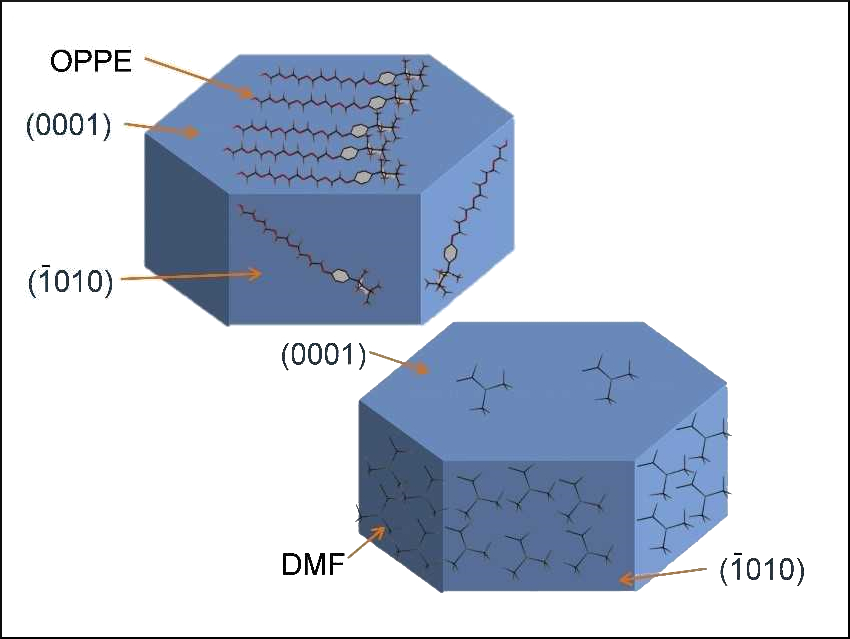Nanosized Ca(OH)2 has been studied for more than two decades as a promising conservation material for wall paintings, ancient paper, and stone artifacts. However, the existing synthesis methods for nano-Ca(OH)2 are expensive, complex, time-consuming, or require considerable energy.
Bingqing Wei, University of Delaware, Newark, USA, Xuanhua Li, Northwestern Polytechnical University, Xi’an, China, and colleagues have developed a surfactant molecule-controlled crystal growth method to synthesize nano-Ca(OH)2. Density functional theory (DFT) calculations showed that octyl phenyl polyoxyethylene ether (OPPE) and dimethylformamide (DMF) surfactant molecules preferentially absorb on the (0001) and (1010) facets of Ca(OH)2, respectively (pictured). The crystal growth is, thus, hindered in both directions when optimized amounts of OPPE and DMF are used, resulting in nanosized Ca(OH)2 particles.
This method provides a simple, large-scale, time-saving, and economical method for synthesizing nanosized Ca(OH)2 at room temperature. The resulting nano-Ca(OH)2 shows excellent penetration into wall paintings, considerably improves the durability of the paintings, and has no side effects on the color, pore distribution, or porosity of the paintings.
- Tuning the Dimensionality of Nano Ca(OH)2 with Surfactants for Wall Painting Consolidation,
Jinmeng Zhu, Xuanhua Li, Jing Yan, Xichen Zhao, Yijian Cao, Mara Camaiti, Tong Li, Bingqing Wei,
ChemNanoMat 2019.
https://doi.org/10.1002/cnma.201900333



![Synthesis of [c2]Daisy Chains via Mechanochemistry](https://www.chemistryviews.org/wp-content/uploads/2025/04/202504_RotaxanesWithSolidStateMechanochemistry-125x94.png)
